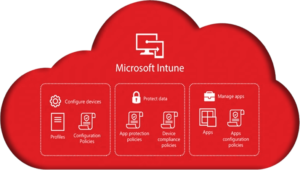Mergers and acquisitions promise growth, but the operational aftermath often reveals a deeper challenge…
It involves integrating people, systems, and processes.
While most attention stays on financials, contracts, and branding, the complexity of unifying HR systems is frequently underestimated.
There are fragmented employee records, mismatched workflows, and identity conflicts that can quietly erode value. HR tech, particularly centralized HRIS and automation, plays a pivotal yet often invisible role in ensuring post-merger continuity.
From day-one access provisioning to harmonized data governance, the right tools quietly reduce friction and risk, and it sets the foundation for cultural alignment and long-term M&A success.
Workforce Integration Challenges in M&A
When companies merge, integrating financials and brand assets may take weeks. But aligning workforces takes months, if not years.
The challenge here is the HR data architecture, identity systems, job classifications, policies, and access entitlements, where each is often shaped by years of delayed evolution.
You are not just merging people. You’re merging spreadsheets with SaaS platforms, on-prem AD with Entra ID, and approval workflows with completely different logic trees.
But if a centralized HRIS and proper IAM tools like Adaxes are missing, the result is often fragmented user access, compliance gaps, and operational drag across the enterprise.
Why HR Tech Is Key to M&A Success
HR technology is foundational to operational continuity and employee experience during integration, despite being sidelined in many M&A playbooks. The systems that manage people, including things like onboarding, access, roles, reporting structures, etc, quietly determine how fast merged entities can function as one.
Let’s break down how🔽
- Access provisioning is not just IT’s job; it depends on clean, unified HR data.
- Policy harmonization cannot happen without central control over leave types, compensation models, compliance standards, etc.
- Employee experience, from email addresses to pay cycles, is shaped by invisible systems most teams underestimate.
RELATED: The Best HRIS Systems for 2025: Spotlight on Adaxes and More
In short, HR tech sets the pace of post-merger normalization.
Let’s understand this in depth…
1. Day-One Readiness: The Identity Challenge
“Day One” is not just symbolic but truly operational. Employees expect uninterrupted access to systems, calendars, email, and collaboration tools the moment the merger is official.
But identity management across two disparate orgs is rarely seamless.
Employees usually face issues like login failures, duplicate accounts, missing permissions, etc, without unified directories and synchronized HR data. These IT nuisances are more than their face value and truly productivity and morale killers.
Solutions like Adaxes and Entra ID hybrid configurations enable conditional automation…
Provisioning access based on dynamic HR attributes, enforcing role-based policies, and maintaining audit trails, all vital during volatile transitions.
HRIS becomes the source of truth; IAM becomes the enabler.
2. The Hidden Cost of Data Discrepancies
When two organizations merge, HR data inconsistencies become liabilities.
Inconsistent job titles, duplicate employee records, mismatched department codes, and conflicting hierarchies all converge into chaos.
These discrepancies delay payroll alignment, benefits migration, compliance reporting, and whatnot, as they often go undetected until they cause damage.
The real cost? Lost trust, employee churn, and regulatory exposure.
A centralized, rules-driven HRIS acts as a normalizer. When paired with identity governance tools like Adaxes, the system flags anomalies, reconciles records, and feeds accurate data downstream, be it Finance, IT, or Compliance. Clean data is the silent cornerstone of post-merger stability.
RELATED: 7 Powerful Features of Softerra Adaxes
3. Role Conflicts, Approvals & Access Rights
Post-merger org charts are often messy, with overlapping titles, dual reporting lines, and shadow roles.
Who approves what? Who should access which systems? Without standardized roles and access policies, decisions stall and security gaps widen.
Here’s where intelligent automation works…
You can define access rights by role taxonomy by syncing a consolidated HRIS with platforms like Adaxes or Microsoft Entra. Automated approval chains adapt dynamically as roles shift. No more manual ticket-chasing or risky over-permissioning.
This governance and operational clarity are essential when two orgs are learning to move as one.
4. Compliance by Design, Not Firefighting
Mergers and acquisitions are regulatory minefields. Labor laws, data residency rules, and industry-specific standards, all collide as entities integrate.
Most firms scramble to meet compliance retroactively, relying on manual checklists, emergency audits, and legal patchwork. This unsustainable scenario is certainly not strategic.
A centralized, well-integrated HRIS flips the model.
When properly architected, it becomes a system of record for personnel data and policy enforcement and auditable control. For instance, connecting the HRIS to Microsoft Purview enables continuous monitoring of role changes, location shifts, and classification flags, all tied directly to regulatory obligations like GDPR, HIPAA, SOX, etc.
Meanwhile, platforms like Adaxes and Entra ID Governance offer automated policy enforcement based on real-time HR data. If a user moves across borders or business units, associated access reviews and compliance workflows are triggered without human delay.
In M&A, where scrutiny is highest and exposure is amplified, embedding compliance into the data flow is the only way to protect brand and business continuity.
RELATED: Security First: Safeguarding AD Assets During Mergers and Acquisitions
5. Culture, Continuity & Change Management
The most overlooked asset in any merger is its people and not the platform or a patent. When M&A integrations fail, it’s often because organizations underestimate the emotional and operational disruption that comes with a change.
Employees face uncertainty, new systems, unclear roles, and unfamiliar colleagues. Cultural rifts widen. Productivity dips. Attrition spikes. HR tech plays a critical, and often invisible, role in navigating this problem.
A centralized HRIS functions as a data hub and a continuity engine. When integrated with tools like Microsoft Viva, it can surface personalized onboarding journeys, internal communication campaigns, and pulse surveys, all personalized by location, function, acquired entity, etc. This keeps employees informed, seen, and engaged.
Automated change management workflows (enabled by Adaxes or Entra ID) ensure that system access, training invitations, and policy acknowledgments follow people as their roles shift in real time.
Conclusion
When HR Tech Becomes Integration Infrastructure
Mergers and acquisitions are rarely undone by spreadsheets or deal terms; they falter when the human layer is mismanaged.
HR tech, when treated as strategic infrastructure rather than back-office tooling, becomes the invisible scaffold holding post-merger operations together.
It aligns identity, access, communication, and continuity, at scale, across jurisdictions, and in the face of complexity.
But this orchestration doesn’t happen by accident.
Why WME?
At WME, we don’t just implement HR systems but engineer integrated ecosystems customized for high-stakes transitions like M&A.
Whether you’re consolidating directories with Entra ID, automating lifecycle events through Adaxes, or centralizing HRIS platforms, we bring architectural thinking and real-world precision.
We know the compliance nuances. The change management pitfalls. The workflow dead zones. And we bridge them securely and without disrupting the human side of the equation.
Windows Management Experts
Now A Microsoft Solutions Partner for:
✓ Data & AI
✓ Digital and App Innovation
✓ Infrastructure
✓ Security
The Solutions Partner badge highlights WME’s excellence and commitment. Microsoft’s thorough evaluation ensures we’re skilled, deliver successful projects, and prioritize security over everything. This positions WME in a global tech community, ready to innovate on the cloud for your evolving business needs.






